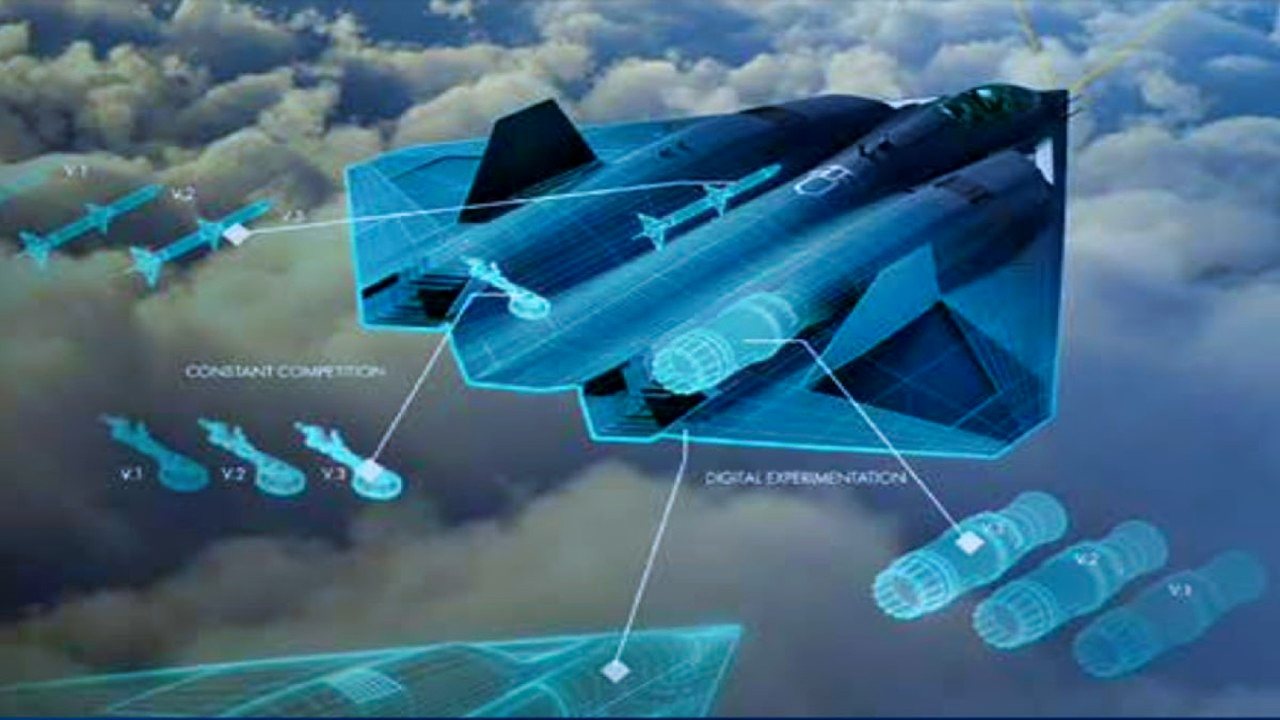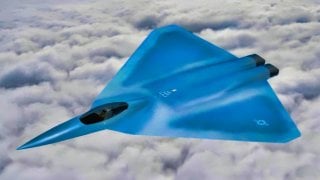X-44 Manta: The Freaky Fighter Plane That Could Have Dominated Everything
The X-44 MANTA, a concept developed by Lockheed Martin and NASA, aimed to revolutionize aerial combat with its unique design and capabilities. As a stretched delta-wing mainplane with no tail, the X-44 promised unparalleled stealth, intended to outperform even the F-22A Raptor in low-visibility operations.
Summary: The X-44 MANTA, a concept developed by Lockheed Martin and NASA, aimed to revolutionize aerial combat with its unique design and capabilities. As a stretched delta-wing mainplane with no tail, the X-44 promised unparalleled stealth, intended to outperform even the F-22A Raptor in low-visibility operations. With thrust-vector control and powered by Pratt & Whitney's turbofan engines, it was designed for extreme maneuverability and high speeds up to 1,500 mph. Its arsenal would include an internal cannon, AIM-9 Sidewinder, AIM-120 AMRAAM missiles, and GBU-32 JDAMs, offering both air-to-air and ground attack capabilities. Despite its potential, the program was not fully realized, leading to speculation that its innovations have been integrated into the Air Force's Next Generation Air Dominance (NGAD) project.
The X-44 Manta Would Have Been a Powerhouse in the Sky
It has been described as a “stretched delta-wing mainplane,” by the writers at Military Factory. Its conceptual origins date back to 1999, when Lockheed Martin and NASA partnered to create a next-generation flying machine. Specifically, Lockheed and NASA were trying to create the X-44 Multi-Axis No Tail Aircraft (MANTA). Looking like a sleeker F-22A Raptor, the X-44 was a delta-shaped plane with no tail. It was meant for extremely low-visibility flight and, had it been built and deployed, it likely would have been the stealthiest plane ever made.
Lockheed was trying to develop a fighter with thrust-vector control. This is a fancy way of saying that Lockheed was trying to build a fighter that could maneuver so aggressively in a dogfight that it could end-run its rival. Powered by Pratt & Whitney’s side-by-side turbofan engines, the X-44 would have enjoyed 35,000 pounds of thrust. What’s more, the plane was intended to achieve speeds of about 1,500 miles per hour.
The X-44 would have carried a powerful assortment of weapons. It had a single 20 mm internal cannon. The bird could fire two AIM-9 sidewinder missiles. It could carry up to six AIM-120 AMRAAM missiles. The warbird could be outfitted with two 1,000-pound GBU-32 Joint Direct Munitions (JDAM), which could be used to pound targets on the ground.
On top of that, it could travel farther than previous warplanes.
X-44 Had Greater Range Than the F-22
A larger range than the F-22, better stealth capabilities, and an impressive arsenal of weapons, why was this program never built?
The fact of the matter is that the X-44 is being built, albeit in a slightly different form. It is likely that the X-44 heavily inspired the concept for the Air Force’s Next Generation Air Dominance (NGAD) sixth-generation warplane. But the Air Force has some real problems, in that it has been developing and fielding highly complex, expensive warplanes that may have decreased strategic value for the navy.
For example, the fifth-generation warplanes, the F-22A Raptor and the F-35 Lightning II, are still not yet past their primes. Even the F-22, which Washington wrongly terminated in 2009 is still considered to be the greatest air superiority fighter in the unfriendly skies today. Despite this, until a year ago, the Air Force was seriously considering retiring the earliest units of its limited F-22 fleet.
Similarly, the F-35 is truly a work-in-progress.
Because America’s enemies are always adapting, the F-35 is always being upgraded. Because of this, the warplane is more durable today and has been embraced by dozens of allied countries. Nevertheless, the F-35’s days are clearly numbered as the Air Force is now developing its replacement.
But if the fifth-generation warplanes are both the most advanced systems on the market right now and still the military is looking to replace it with a sixth-generation warplane (the NGAD).
Here’s Where the Pentagon Should Be Investing
The X-44 was a phenomenal plane. Had the Pentagon taken it seriously and purchased the plane, bringing into the real world, who knows how much better off the country would be.
At the same time, the US military was heavily invested in both the F-22 and F-35 programs. While the X-44 may have had greater stealth and range than the F-22, the fact remained that the X-44 would likely have been very expensive, its maintenance onerous, all for a modest boost in capabilities.
A greater concern should be that the Air Force is building any sixth-generation system. After all, the sixth-generation planes are only a nominal, or mild, improvement upon the fifth-generation planes. Further, anti-access/area denial (A2/AD) systems and other systems like the A2/AD) network, are making a sixth-generation warplane seem like an extravagance. And there are new ways for detecting even the stealthiest of planes today, meaning that American fighters may be tracked by Chinese stealth-penetrating radar.

The Air Force should be investing more seriously in its hypersonic planes, its hypersonic missiles, directed-energy weapons (DEW), and unmanned systems. As cool as the X-44 was, there was nothing that warranted the expenditure.
What’s more, the X-44 represents a bygone past; an age in which stealth was supreme. Now we have a different need. Sure, stealth is important. But being able to outrun and/or outmaneuver the enemy is even more important.
That is why the Air Force must focus on its hypersonic program.
About the Author
Brandon J. Weichert, a National Interest national security analyst, is a former Congressional staffer and geopolitical analyst who is a contributor at The Washington Times, the Asia Times, and The-Pipeline. He is the author of Winning Space: How America Remains a Superpower, Biohacked: China’s Race to Control Life, and The Shadow War: Iran’s Quest for Supremacy. His next book, A Disaster of Our Own Making: How the West Lost Ukraine, is due October 22 from Encounter Books. Weichert can be followed via Twitter @WeTheBrandon.


